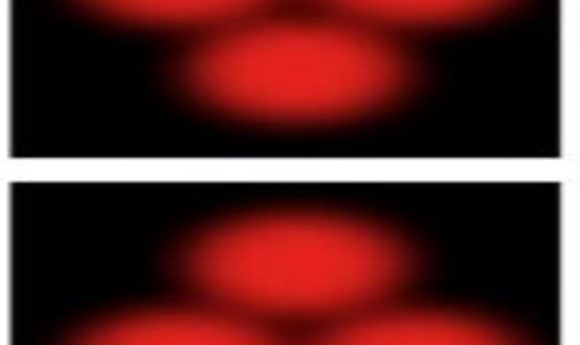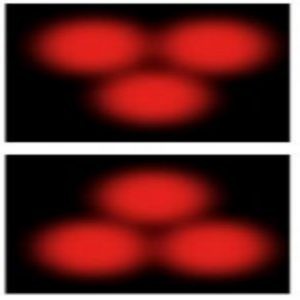Eyes in the womb

Our ability to perceive and react to light may develop well before we are born, a new study shows.

Image of the stimuli presented to the fetuses (1).
As almost every soon-to-be parent has been told, babies learn a lot even before they are born. They hear us speak through the amniotic fluid; they sense their mother’s physical state through hormones passed across the placenta; and now, a new study by Vincent Reid and colleagues at Lancaster University shows that they start perceiving visual stimuli several weeks before they come into the world.
As humans, we rely on vision in almost every aspect of our lives. A pressing question in developmental biology, therefore, is how early this sense develops and how much of our complex visual processing system is already in place by the time we are born. “For a number of years, it has troubled me that a lot of the studies with newborns make a conclusion about their visual capacities, or their visual abilities, in the absence of any knowledge related to capacities of the fetus,” said Reid.
Reid and his colleagues decided to test whether third-trimester fetuses responded to light from outside the womb using 4-D ultrasonography, a technique that allows researchers to observe and measure fetal movements in real time. As a visual stimulus, they shone three points of light on the uterus to resemble either an upright or an inverted triangle. This is a modified form of a paradigm that is currently used to study vision in newborn infants, with the inverted triangle representing a face-like stimulus.
Interestingly, the fetuses turned their heads in response to visual cues when they were in the form of an inverted triangle but not when they were in the form of an upright triangle. This suggested to the researchers that, just like newborn babies, fetuses paid more attention to visual stimuli that had a face-like form, suggesting that postnatal experience is not necessary for this very specific sensitivity to develop.
“It is the first demonstration that I know of showing that fetuses can see,” said Scott Johnson, from the University of California, Los Angeles, who was not associated with the study. “Now we know that the fetuses can not only detect light, but they will actually turn toward a light source,” he said, calling the study a technical breakthrough.
This paper opens the door for more extensive studies of the development of human visual system. “We want to see if we can use some of these behavioral paradigms that have been used many times with infants and see if we can index the same behaviors in the fetus,” said Reid. “It means that now almost all aspects of visual perception in the fetus can be measured.”